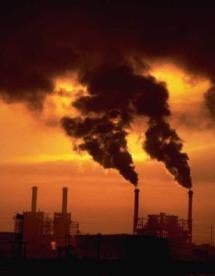On September 29, 2015, US EPA issued a final rule for the regulation of emissions from the nation’s 142 petroleum refinery operations (the “Refinery Rule”). The regulatory structure underlying the rule is complex, but essentially includes both a “residual risk review” to assess the risk to public health, and a “technology review” where, as the name suggests, technology-based standards are reviewed for opportunities to impose further restrictions. The rule is focused on four key changes: (1) fenceline monitoring of benzene concentrations; (2) reductions from flaring and upset emission events; (3) reductions from storage tanks and delayed coking units; and (4) technical corrections to the 2008 Petroleum Refinery New Source Performance Standards. Of these, the first two are most likely to force process and equipment changes on virtually all refineries, with the potential for significant capital costs.
Fenceline Benzene Monitoring
As to fenceline monitoring, US EPA is requiring periodic monitoring around facilities to capture benzene emissions regardless of wind direction with quarterly reporting of monitoring data. Corrective action will be required if benzene emissions exceed 9 micrograms per cubic meter (µg/m3). Refineries have two years to install monitors to encircle the facilities and begin monitoring. Reduced monitoring frequency of every two weeks, “skip period” monitoring, is available for facilities that can demonstrate two years of data below the fenceline benzene concentration action level without a single exceedance. Monitoring frequency may continue to reduce from two weeks to quarterly, then semi-annually, and finally annually when demonstrated through consecutive 2-year periods of data below the action level. If you exceed the limit even once, you return to the original frequency for one quarter. If the monitoring data for that quarter stays below the action level, you return to where you left off before the exceedance. However, exceed it again and you begin the process all over again.
Among the various adverse comments, numerous commenters pointed out that the fenceline monitoring program unlawfully imposes a de facto ambient air quality standard for benzene, in violation of Section 112 that only authorizes control of emission “sources.” For its part, US EPA responds in part that the applicable test method, EPA Method 325A, is adequate to differentiate facility emissions from background “ambient” concentrations. It is doubtful that this issue will go away quietly and seems fertile ground for legal challenge. Stay tuned.
Flaring and Upset Emission Events
The Refinery Rule intends to “virtually eliminate” flaring and upset emission events at these operations and dovetails with US EPA’s ongoing enforcement initiative to address hazardous air pollutants—particularly those from petroleum refineries and chemical manufacturing facilities. The rule follows closely on the recent issuance of revised emission factors for flaring. This aspect of the Refinery Rule is designed to force a comprehensive program of process changes and pollution control measures, highlighted by four initiatives. First, a minimum of three redundant pollution prevention measures must be installed to prevent atmospheric releases from pressure release devices. Second, continuous monitoring of flares and pressure release devices is required. Third, direct release events and emergency flaring require a root cause analysis and corrective measures. Here, a second event from the same root cause from the same equipment would constitute a deviation of the standard. Lastly, the Refinery Rule imposes a hard limit of no more than three events (not otherwise a “force majeure” event) in three years per device or flare, otherwise the release becomes a deviation.
Existing sources are given three years to comply with these key O&M and work practice flaring requirements. US EPA states that its focus on operational changes to prevent pressure relief device releases and emergency flaring is designed with an eye towards reduced reliance on flares to control releases. However, in some cases the viable alternatives to flaring may require the installation of flare gas recovery and flare minimization systems, which can impose eight-figure capital costs.
Along these lines, the Refinery Rule provides that for “high-load” flaring events (those which exceed the smokeless capacity of the flare), a flare management plan must be developed that considers measures that may be implemented to reduce the frequency and magnitude of high-load flaring events. Although these measures may include process changes, the Refinery Rule urges that “this may include installation of a flare gas recovery system.” Even though US EPA does not go so far as to say the evaluation “must” include these systems, the imposition of these systems in a number of consent decrees in recent years suggests that it may be viewed as more of a default alternative to flaring than the discretionary language otherwise suggests. Those companies without such systems should be alert to how these requirements may impact operations and whether they are at risk of triggering such flaring events.
Storage Tanks and DCUs
While the bulk of the projected emissions reductions come from the new flaring requirements—which are estimated to reduce 3,900 tons per year of HAP and 33,000 tons per year of VOCs—US EPA also squeezes out some additional reductions from storage tanks and delayed coking units to arrive at the overall projected reductions by redefining equipment descriptions and imposing new requirements for more expansive regulatory coverage. While existing sources are being given three years to comply with the DCU requirements, they only have 90 days from the effective date of the rule to comply with the storage tank requirements.
Costs and Benefits
Despite the challenges and expensive options described above, the Refinery Rule is actually somewhat less stringent than the June 30, 2014 proposal. For instance, US EPA decided against real-time monitoring, outright ban for relief valves, and broader expansion of flare limits. While raising concerns as to costs, the American Petroleum Institute described the final rule as “much improved,” which seems less contentious than might be expected—particularly in the wake of the hotter rhetoric towards recent high-profile rulemakings, such as the new ozone standards or the Clean Power Plan.
In standard US EPA fashion, the Agency declares that the benefits far outweigh the costs. Estimating a reduction of 5,200 tons per year of toxic air contaminants (notably benzene, toluene and xylene), 50,000 tons per year of volatile organic compounds, and the equivalent of 660,000 tons per year of CO2, US EPA estimates a total capital cost of $283 million and optimistically projects that the Refinery Rule will “have a negligible impact on the cost of petroleum products.” Industry projections are significantly higher with projections upwards of $1 billion. Moreover, it is anticipated that the costs of the Refinery Rule are likely to spill over into other industries that utilize petrochemical products such as plastics and fiberglass manufacturing.
The Refinery Rule becomes effective 60 days after publication in the Federal Register, which is also the deadline for filing Petitions for Review in the U.S. Court of Appeals for the D.C. Circuit. Accordingly, interested parties should be working with counsel now to assess implications, including the identification of any needed changes for maintaining compliance and/or mitigating costs and risks, and possibly to begin preparation of any necessary legal challenges.




 i
i


